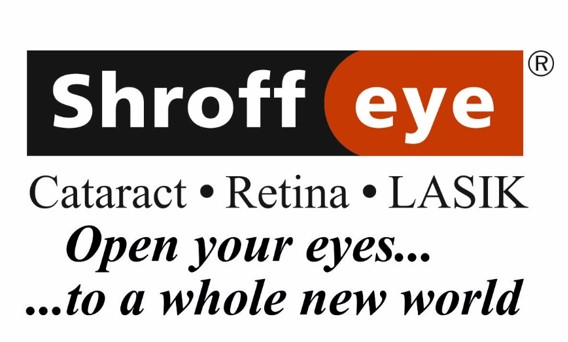Shroff Eye Hospital is India's First Eye Hospital accredited by the Joint Commission International (USA) since 2006. Shroff Eye is also India's first and only Wavelight Concerto 500 Hz LASIK center. Shroff Eye has stood for excellence in eye care since 1919. A firm commitment to quality is at the heart of all services provided at our centers at Bandra(W) and Marine Drive, Mumbai.
Cosmetic restoration for these patients can be done using eye implants or called ocular prosthesis helps in restoring the patients’ confidence by improving their external appearance. The Ocular prostheses are fitted behind the eyelids over a shrunken eyeball or an orbital implant placed following surgical removal of the eye.
When is the artificial eye first fitted?
During this surgery, the deep implant that is placed tends to result in a gentle stretching of the socket tissues. Because this can result in pain and nausea during the first 72 hours after surgery, regular strong analgesics and anti-sickness medications are given. The dressing is removed at home and a review is
scheduled for 2 weeks later when stitches are removed which hold the lids together temporarily (a temporary suture tarsorrhaphy).
At surgery, a temporary clear ‘shell’ is placed behind the eyelids to help prevent the socket from contracting in the weeks after surgery. At about 6-10 weeks post surgery, the ocularist takes an impression of the socket in order to create a bespoke artificial eye (which matches the colour of the other eye), and this is fitted 3-4 months after the surgery when the wound is secure and all the swelling
has subsided.
How do I need to care for the artificial eye (prosthesis)?
The artificial eye should only be removed very infrequently for cleaning. It is wise to use artificial tears 3-4 times a day and at bedtime to keep the surface lubricated. The artificial eye should be checked and polished at least once a year by an ocularist and usually needs replacing after 5-7 years. The socket will
be checked at the same time to ensure that there are no problems. With good attention to socket and eyelid hygiene and maintenance of the artificial eye problems such as discharge and discomfort are generally prevented.
How will I look after surgery, and when can I wear an artificial eye?
The artificial eye, or ocular prosthesis, is designed and fitted by specialised colleagues called ocularists.
They have considerable experience in both making and fitting a bespoke artificial eye, and monitoring the subsequent fit and health of the eye socket. The bespoke artificial eye is made, using the colour and characteristics of the fellow normal eye as a template. It is usually fitted as soon as the socket has completed healed. This can take 2-3 months. It is important that the artificial eye is not fitted too soon as this can disrupt the wound and predispose to exposure of the buried implant.
Why can the upper eyelid sometimes appear to be hollow when wearing the artificial eye?
The removal of an eye can result in the loss of some of the volume of a socket, giving the eyelids a ‘hollowed’ appearance, in spite of the use of an orbital implant. This is due to atrophy (shrinkage) of the fatty cushions deep within the socket. This ‘hollowed’ appearance (often referred to as ‘post enucleation socket syndrome’) can be addressed by increasing the volume deep in the socket, thus
allowing a thinner (and therefore lighter) artificial eye to be worn. This can be done in a number of different ways e.g. by placing additional implants into a different surgical space in the socket.
Can a larger artificial eye address the appearance of ‘volume deficiency?
Increasing the size of the prosthesis to compensate for socket volume deficiency can indeed address small degrees of ‘hollowing’, and in many patients is either adequate or preferable to undergoing further surgery. However, over time a large prosthesis tends to weigh on the lower eyelid (causing laxity), and may not move as well as a lighter prosthesis. Although lid laxity can usually be treated by
tightening the lid, if the main problem is volume deficiency, this also should be addressed.
The artificial eye is unstable – why?
For an artificial eye to sit comfortably in the socket, there needs to be a sufficiently large ‘pocket’ (conjunctival fornix) behind both the lower and upper eyelids. Shallowing of these fornices can lead to discomfort (due to irritation of the mucosal lining), mucus discharge, an unstable artificial eye, and difficulty inserting the artificial eye. This is addressed by ensuring that there is sufficient volume in the socket, and then enlarging the fornices either by redistributing local tissue, or by placing a graft of oral mucosa taken from the inside of the lower lip into the socket.
Will the artificial eye look real?
Yes. The ocularist ensures that the artificial eye matches the normal eye as much as possible. The artificial shells are individually made to fit the socket optimally and the colors are chosen carefully and hand painted to match the other eye. The newer prosthesis available today are of excellent quality and very close to ‘natural’ eyes.
Will the prosthetic shell move like a natural eye?
Yes. Depending upon the type of implant and surgery that has been done, it will have quite close to natural movements. Patients also learn how to use the eyes over time such that the artificial eye gets unnoticed by onlookers.
Will the eyelids blink over the prosthetic shell?
Yes. The eyelids blink normally over a good fitting prosthesis.






